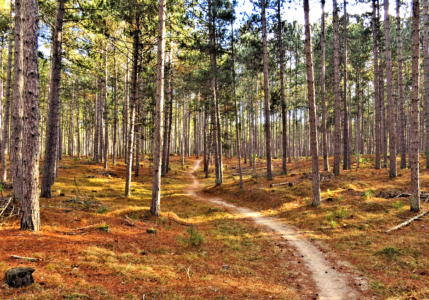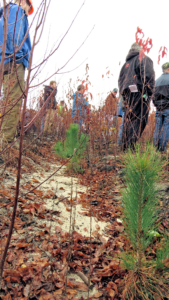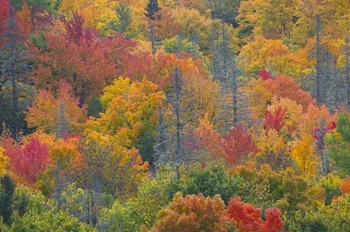Red Pine Glory

Bill Cook
Red pine plantations are unfairly maligned by some elements within the environmental community. In reality, red pine plantations are often a legacy of past efforts to rejuvenate the forest. They continue to be a promise for needed future fiber to support our ever-demanding society.
Red pine is a marvelous forest species with a colorful past and a unique life history. The Civilian Conservation Corps planted many millions of red pine over tens of thousands of acres on cutover and burned-over land. Red pine was chosen because it could be produced in nurseries, was fairly easy to plant, survival rates were acceptable, and was among the fastest growing in the Lake States. The utilitarian wood could be milled into lumber, pulped and then made into paper, and used for a wide variety of other products.
Fast forward nearly a century. Most of the Lake States forests have now recovered from the historic logging era, albeit to different mixes, to marvelous landscapes of forest types and forest conditions. Some of the CCC red pine remains today. Much has been harvested and converted to other forest types. A good share now grows housing and other human infrastructure.
Red pine occupies a tad over four percent of the Lake States forest, with over two-thirds of the area aged 30-80 years. Nearly one-third of that area consists of natural origin stands.
There exists a trend among some folks that red pine in rows is bad for the environment, and that production forestry is also bad for the environment. A dose of science intermingled with the dogma of pseudo-environmentalism may be the origin of such misconceptions about red pine, and forestry in general.
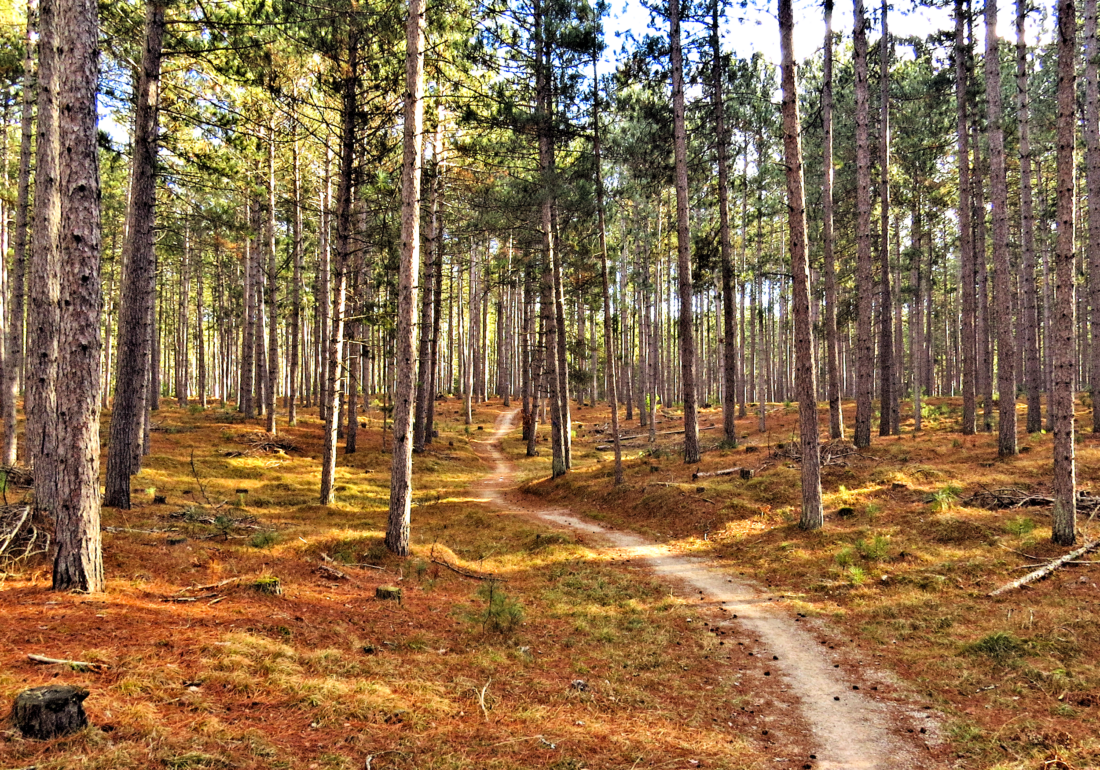
Courtesy Photo Red pines line a forest pathway.
One objection is the well-worn notion of a “biological desert”, which at certain red pine age classes is partially correct at the stand level. Production red pine dominates the stand, by design. Most every tree is, indeed, red pine. However, on the landscape level, red pine plantations add to diversity. It is something different in an ocean of hardwoods. This is a good thing from a diversity angle.
Curiously, about 80 percent of Lake States red pine volume grows in red pine forest types. In comparison, 91 percent of sugar maple grows in northern hardwood stands, 44 percent of white pine in white pine stands, and 71 percent of aspen in aspen stands, and 66 percent red oak in red oak stands.
Another objection to red pine plantations is the visual impact of trees in rows, which is fair enough. Each person is entitled to an opinion. However, I suspect most people don’t mind the rows and it might be difficult to name a wildlife species that would much care.
Yet, as a plantation is thinned, discrete rows become less and less obvious, especially if an effort is made to do so. This is part of the natural development of red pine stands, including natural origin red pine. Once the plantation reaches sawtimber sizes, the quiet, cathedral-like forest of whispering pines can be therapeutic.
Another frequent objection is the higher altitude perception that “production” forestry is somehow an abusive practice. Few things could be less true. Providing wood for society is an essential endeavor, as wood is used in thousands of products. Wood production not only has the lowest environmental footprint among raw materials, it has multiple other public and ecological benefits, much different than that soybean field or a woodland subdivision. Wood is good.
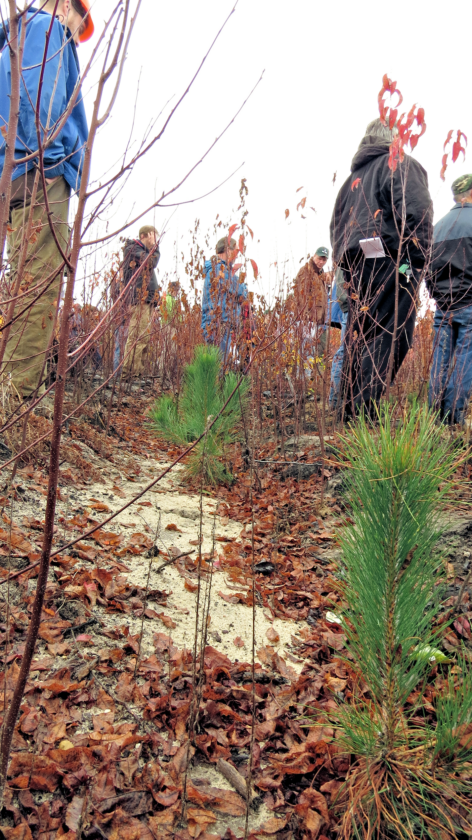
Courtesy Photo Newly planted red pine saplings are seen here.
It is unlikely that any Lake States wildlife or plant species has been extirpated or gone extinct as a result of forest management. Conversely, there is a growing list of “species of concern” that benefit from forestry. The Kirtland’s warbler is a poster-child for these success stories. Forestry is good for wildlife, as well as for other values.
The major challenge in maintaining red pine in our forest matrix is the reforestation effort, and the subsequent need for proper follow-through. A forest owner must have the desire and foresight to see beyond their own lifespans, and rely upon the dedication and knowledge of the next generation. Much of forestry is this way.
The best way to predict the future is to create it, according to Abraham Lincoln.
The expense of planting can be difficult to justify, especially in this age of luxury forests, where the land no longer must “pay its own way.” This form of “benign neglect” shifts production forestry pressure from the vast private forest owner land base to corporate and public forests.
Aldo Leopold illustrates the restorative impacts of planting red pine in his classic volume “A Sand County Almanac.” He writes, “Acts of creation are ordinarily reserved for gods and poets, but humbler folk may circumvent this restriction if they know how. To plant a pine, for example, one need be neither god nor poet; one need only own a shovel.”
The bottom line, perhaps, is that red pine plantations are valuable assets, economically, socially, and environmentally. Little is gained by devaluing them, yet much may be lost. Perhaps, the landscape and humanity might be better served by avoiding too much “production ecology”?
Bill Cook is a retired MSU Extension forester/biologist.
- Bill Cook
- Courtesy Photo Red pines line a forest pathway.
- Courtesy Photo Newly planted red pine saplings are seen here.


